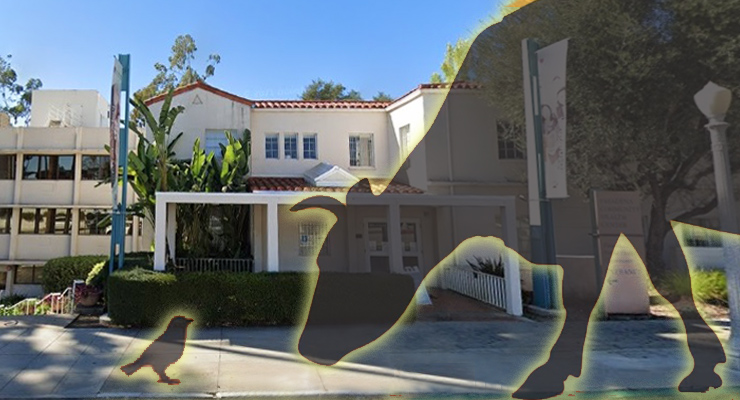
Across the country, public access stations are being shuttered at an amazing rate. Los Angeles has closed all of its stations, along with cities in Illinois, Indiana and Michigan.
But in Pasadena, the story is different as Pasadena Media continues to flourish. One of Pasadena’s three operating companies, Pasadena Community Access Corporation operates on a $1 million budget, compared to the relative fiscal juggernauts, the Rose Bowl Operating Company and the Pasadena Center Operating Company.
Under that umbrella, Pasadena Media facilitates public service programming on behalf of four channels, KPAS, the city’s government channel, the Arroyo channel, the public access station and two educational channels – KLRN, which covers the Pasadena Unified School District and PCCtv, the Pasadena City College channel.
The station recently launched a podcast studio and continues to see interest from local residents hoping to produce a show.
“We’re the voice of the people for the city,” said Executive Director and CEO George Falardeau. “Our focus is on issues that happen within the community. This is a place for community members to have a voice and to strive for achievement. Here we facilitate their voice and development of media skills. The community can actually come here, learn how to make television, and then they have an opportunity to create their own television show.”

In some cases, local producers have built that training into a larger career path.
Falardeau, previously worked at the ArtCenter College of Design, where he served as the Senior Vice President of Real Estate and Operations for ArtCenter College of Design, and played a key role in the master planning and real estate acquisition for their campus expansion.
Falardeau knows TV. He’s been nominated for 12 Emmy Awards and won one in 1984, for his work on “The Magic of David Copperfield VI” for Outstanding Technical Direction and Camera Work.
He also worked at NBC, where he was the Vice President of Facilities and Services for NBC Burbank, and held other positions, including Director of Production Operations Planning, Technical Operations Manager, Technical Director and Camera Operator for various entertainment, sports and news venues.
Pasadena Media began more than 30 years ago with just a few pieces of equipment, according to Falardeau. Since that time, mayors, police chiefs, reporters, congressman, city managers and local candidates have used the station to reach local residents through Pasadena Media. The station’s government channel airs City Council meetings, the Black History Parade, the Latino Heritage Parade and other events live. The public access station allows local residents to give their opinion on city events and its impact on the city.
“When it comes to training, we treat it like a regular class,” said Aaron Wheeler, Head of Community Development. “We have prerequisite training classes that producers attend and we help them develop their show, within the parameters that Pasadena Media has created. We also have our production training, which includes camera production, editing, post-production. We even bring them into a little bit of graphic designing and some other aspects of production.”
Producer James Farr took his edgy talk show, “The Conversation Live,” from Facebook to Pasadena Media last year.
“Working with the staff at Pasadena Media has been an enriching experience,” Farr told Pasadena Now. “The team over there is very passionate and professional assisting producer created broadcast quality content.”
Public Access television began in the late 60s when the Federal Communications Commission (FCC) began searching for ways to provide an outlet and facilities for local voices on cable stations with 3,500 or more subscribers.
“We have a combination of programming. We have our normal programming that we do every single year, like the Mayor’s State of the City address and City Council meetings,” said Bobbie Ferguson, Head of Production, “As we’ve worked with Lisa Derderian, the city’s Public Information Officer, we’ve determined which departments really had a lot of content to provide. Then we work with each of those departments in order to create that content and do those shows monthly or bimonthly. And, we rotate them through the schedule.”
Those monthly shows include programs on the libraries, the city’s police department and Human Services and Recreation Department, “Pasadena in Focus” correlates with the city’s bi-monthly newsletter and “Body, Mind, Spirit” is about health fitness and lifestyle in the city.
“They have dramatically increased the content for the government channel,” Falardeau said. “If you look at it and you see the programming that we implemented, it’s really made a huge difference.”
But still things could be better, Mayor Terry Tornek wants the station to do a better job getting the word out on what each department does.
 “Not everybody watches the programming that we provide on the Arroyo channel,” Falardeau said. “Not everybody watches the city council meetings every Monday night. And so you get a limited group of people. I think the mayor’s focus is our focus, because we want to get the word out to all of the community. We have 140,000 people living in our city.”
“Not everybody watches the programming that we provide on the Arroyo channel,” Falardeau said. “Not everybody watches the city council meetings every Monday night. And so you get a limited group of people. I think the mayor’s focus is our focus, because we want to get the word out to all of the community. We have 140,000 people living in our city.”
But even with the desire and need for local programming, politicians have no problems pushing laws that allow cable stations to give less money and even eliminate the programming.
In 2006, then Gov. Arnold Schwarzenegger signed a law that many people thought would spell the death knell for public access stations.
At that time, phone companies like AT&T were making moves into the cable market with bundled services that would provide, internet, phone and cable.
Those companies didn’t want to go city by city to win franchises, instead they spent millions of dollars lobbying to make sure cable would be regulated on the state level. After the law passed cable access studios began going dark.
Despite the calls, and predictions, for the demise of public access, the station pressed on and even had a live community produced call-in shows several nights a week.
“I stand before the mayor and city council every year to fight for funding of this operation, this corporation,” Falardeau said. “I tell all the council members and anybody in the community that will listen to me that freedom of speech and freedom of expression for the community is essential during what we’re going through with this larger transition of our government. On a national level, it’s even more important.”
“I will fight for the fact that freedom of speech and freedom of opportunity for the community to have their voice to express how they feel and what they feel needs to be represented is essential in any great city.”
“There’s a statewide law known as DIVCA, the Digital Infrastructure and Video Competition Act that was put into place about 10 years ago that dictated one percent of the cable television revenue from the cable operators is given to local franchising authorities, as a strictly capital pool of money that we can use to run stations,” said Chris Miller, Chief Operations Officer. “For instance, we just bought a new switcher in December for our main studio with that capital money.”
The station also is not cutting back its services. Recently they added a podcast studio.
The move came a year ago after the executive staff proposed the addition to Falardeau when he was considering adding an AM radio station.
“I thought at the time that it would be a way for me to get the message out, not just via television, but also AM radio,” he said. “It was problematic and expensive, and they persuaded me to move towards podcasting.”
According to Miller, the staff converted the station’s green room to a podcast facility. One of the goals with the podcast studio was not just to expand, programming opportunities and provide training for people to learn audio in a different way, but also to address the demands of television production.
“Television is a very difficult medium,” Miller said. “It takes a lot of people to make television. So, a lot of people were kind of scared off by that I think. This helps reduce those barriers and gets people in here who weren’t coming in here before so they can get their voice out.”
The station has won numerous awards, including the Hometown Media Award in the category of Overall Excellence in combined Public, Education or Government (PEG) Access $650,000 – 1,000,000 at this year’s national conference for the Alliance for Community Media. This highly competitive awards program receives thousands of submissions from community access centers all around the nation. The Hometown Media Awards were established to honor and promote community media and local cable programs that are distributed on PEG access cable television channels.
“That’s like getting an Academy Award for us. It was a big, big deal,” Falardeau said.


















